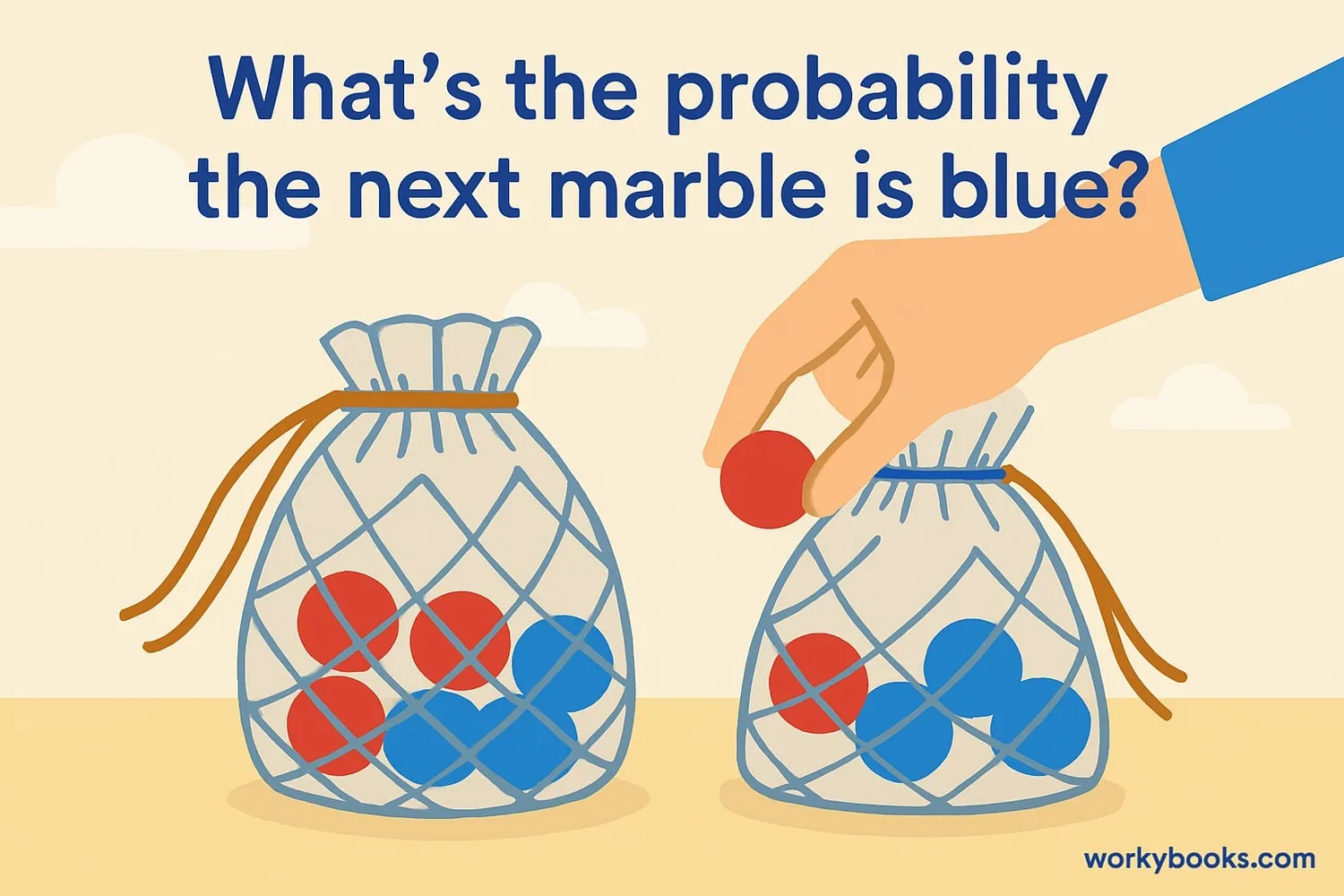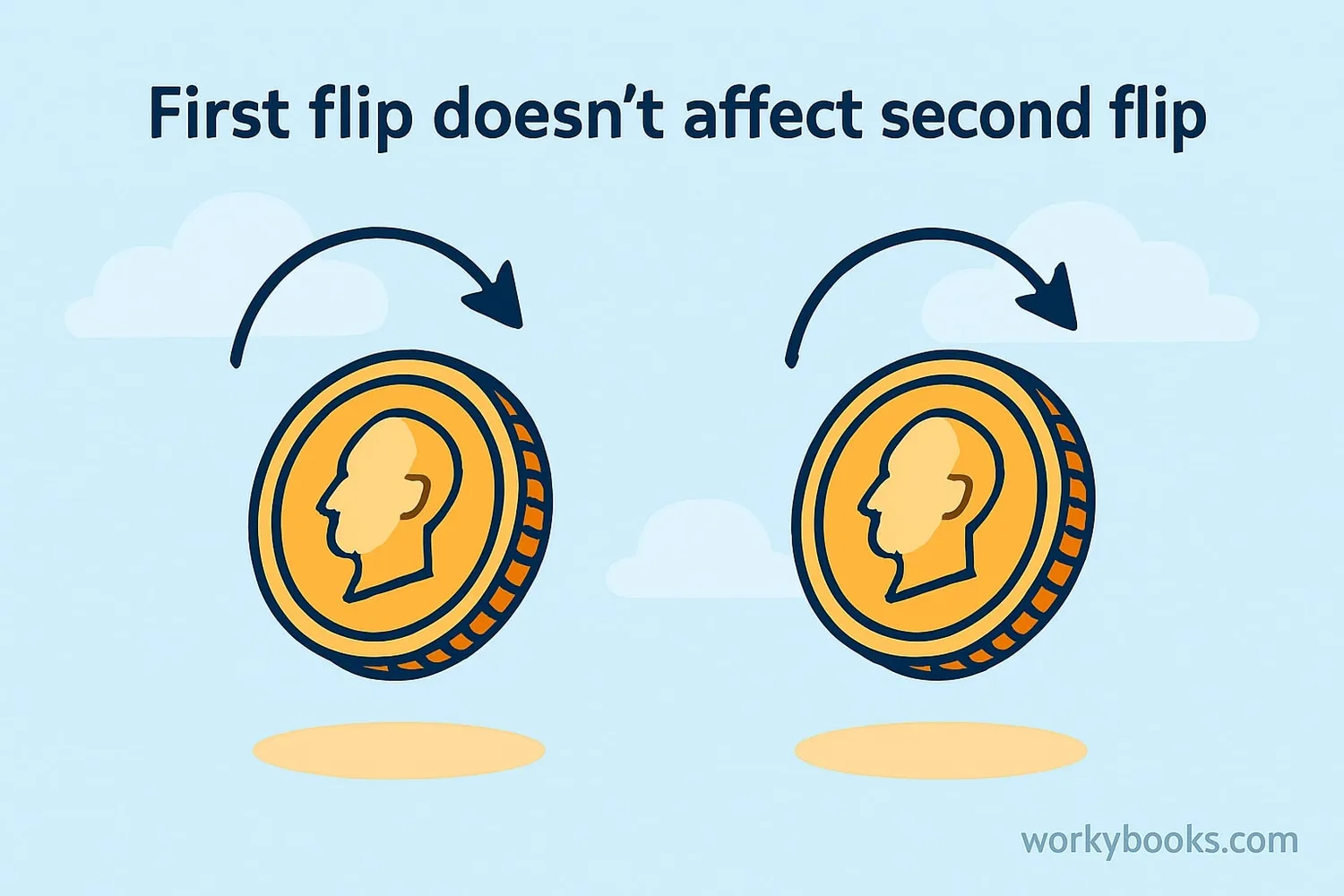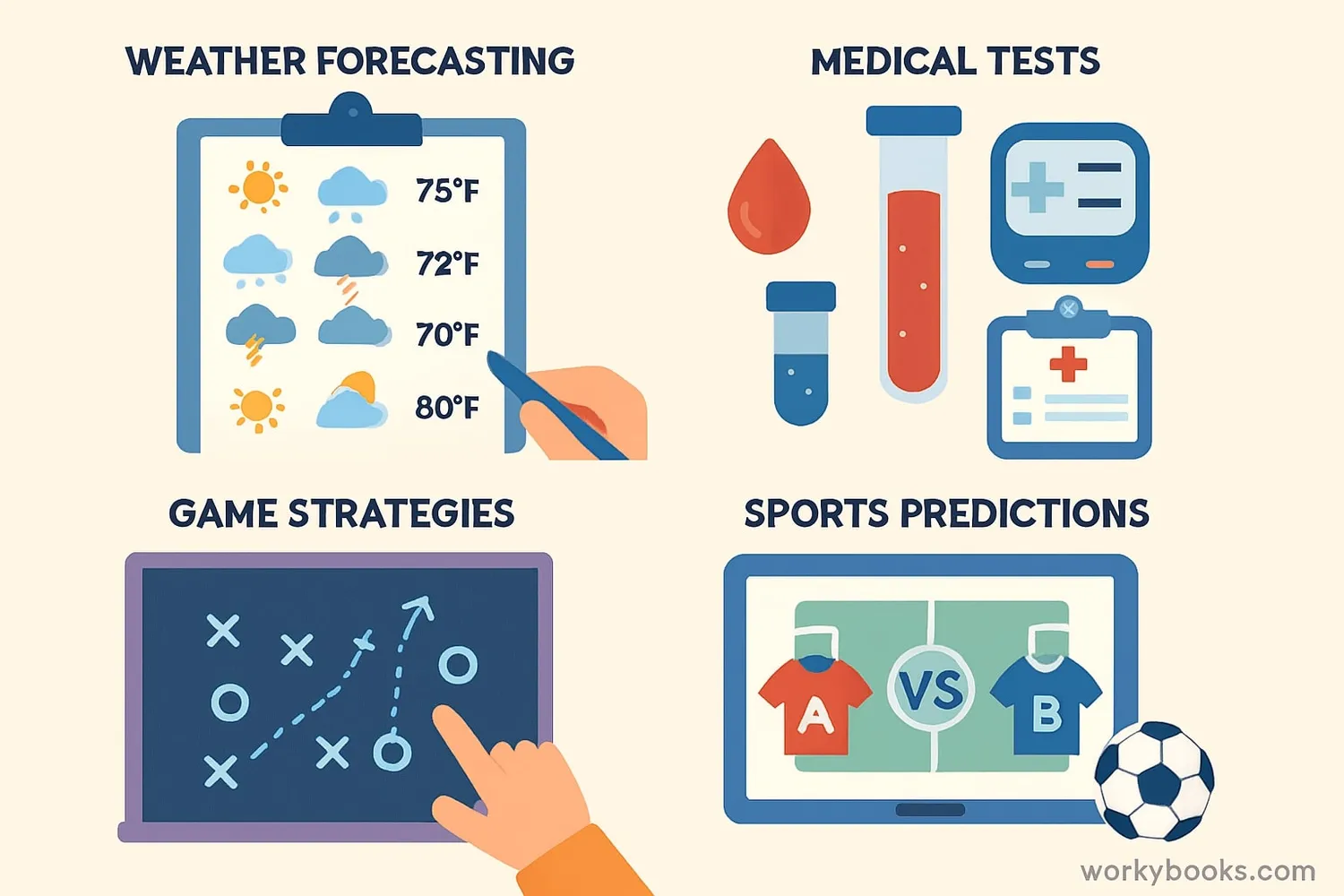Conditional Probability - Definition, Examples, Quiz, FAQ, Trivia
Learn how probabilities change when we have additional information
What is Conditional Probability?

Conditional probability is the chance of something happening given that something else has already happened. It's like asking "What's the probability of B happening if we know that A happened?"
Imagine you have a bag with 3 red marbles and 2 blue marbles. If you take out one red marble and don't put it back, the probability of getting a blue marble next has changed because there are now fewer marbles in the bag. That's conditional probability!
We write conditional probability as P(B|A), which means "the probability of B given A." This helps us understand how probabilities change when we have new information.
Key Concept
Conditional probability helps us update our predictions when we learn new information. It's used in weather forecasting, games, and medical tests.
Conditional Probability Formula
The formula for conditional probability is:
Conditional Probability Formula
Where:
P(A|B) = Probability of A given B
P(A ∩ B) = Probability of both A and B happening
P(B) = Probability of B
Example: In a class of 30 students, 15 play soccer, 10 play basketball, and 5 play both. What's the probability a student plays basketball given they play soccer?
P(Basketball|Soccer) = P(Both) ÷ P(Soccer) = (5/30) ÷ (15/30) = 1/3
Remember
The vertical bar | means "given" in probability notation. So P(A|B) is read as "Probability of A given B."
Joint and Marginal Probability
Joint Probability (P(A ∩ B)) is the probability of two events happening together. It's represented by the overlapping area in a Venn diagram.
Marginal Probability is the probability of a single event happening without considering other events. It's the total probability of an event.
Bayes' Theorem
Bayes' Theorem helps us "reverse" conditional probabilities when we have limited information.
Key Concept
Joint probability is always less than or equal to the individual probabilities of each event.
Independent Events

Two events are independent if the occurrence of one doesn't affect the probability of the other. For independent events:
Independent Events Formula
This means the probability of A happening doesn't change whether B happens or not.
- Flipping a coin and rolling a die
- Choosing a card from a deck and then choosing another card after replacement
- Rain today and your favorite team winning tomorrow
Remember
For independent events, P(A and B) = P(A) × P(B). This multiplication rule only works for independent events!
Tree Diagrams
Tree diagrams help us visualize conditional probabilities and calculate probabilities of multiple events. Here's how they work:
- Start from the initial event
- Draw branches for each possible outcome
- Write probabilities on each branch
- Multiply probabilities along the branches to find joint probabilities
Real-World Examples

Example 1: Weather Forecasting
Meteorologists use conditional probability to predict weather. For example, if it's cloudy in the morning (A), what's the probability of rain in the afternoon (B)? P(B|A) might be 70% based on historical data.
Example 2: Medical Testing
If a disease test is positive (A), what's the actual probability of having the disease (B)? This uses Bayes' theorem: P(B|A) = [P(A|B) × P(B)] ÷ P(A)
Example 3: Game Strategy
In a game with two dice, what's the probability of rolling a sum of 7 given that the first die shows 4? P(sum=7 | first=4) = P(second=3) = 1/6
Example 4: Card Games
In a deck of cards, what's the probability of drawing a king given that you've drawn a face card? P(King|Face) = P(King and Face)/P(Face) = (4/52) ÷ (12/52) = 1/3
Conditional Probability Quiz
Test your understanding with these 5 questions. Choose the best answer for each.
Frequently Asked Questions
Here are answers to common questions about conditional probability:
Probability Trivia
Discover interesting facts about probability:
Origins of Probability
Probability theory began in the 17th century when mathematicians Blaise Pascal and Pierre de Fermat exchanged letters about gambling problems posed by French nobleman Antoine Gombaud.
Probability in Genetics
Gregor Mendel used probability theory to establish the laws of genetic inheritance. His pea plant experiments showed predictable ratios that follow probability rules.
Quantum Probability
At the quantum level, probability is fundamental. Quantum mechanics describes particles in terms of probability waves rather than definite positions.
Game Theory
Conditional probability is essential in game theory, which helps determine optimal strategies in games like poker and chess, and in economics for decision-making.





